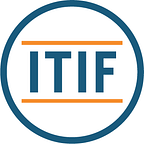Laboratorios Silanes Leverages IP to Develop Breakthrough Antivenom Medications
By Stephen Ezell
Mexico leads the world in the development of antivenom medications to treat bites and stings from poisonous animals such as rattlesnakes, scorpions and black widow spiders.
At the sharp end of the country’s therapeutic breakthroughs are researchers from the 75-year-old drug maker, Laboratorios Silanes. Over the past two decades, the company has transformed itself from principally being a producer of generic drug products into an innovator of new-to-the-world medications, including highly successful antivenoms and oral therapeutics for type 2 diabetes (DMT2).
The public health case for making effective venoms available is strong. Researchers estimate that up to 5.4 million people are bitten by snakes each year globally and between up to 2.7 million develop illness as a result. The annual global death toll from snakebites is estimated to be between 81,000 and 138,000 people.
Laboratorios Silanes’ innovative transformation has been driven partly by its commitment to a significant annual investment — at least 10 percent of sales — in research and development (R&D). It has also successfully used intellectual property (IP) rights to facilitate technology transfer from academia to industry and protect its antivenom products derived from novel production processes.
In 1990, Laboratorios Silanes launched its R&D center, Instituto Bioclón, dedicated to the development of commercial antivenom products. To bring its innovative anti-venom products to market the center has leveraged intellectual property in a number of different way. They include developing its own unique patented processes and licensing basic technologies from universities to then refine and commercialize.
Take Laboratorios Silanes’ breakthrough anti-scorpion venom drug, Alacramyn, released for sale in Mexico in 2000, approved by the US Food and Drug Administration in 2011 and marketed as Anascorp in the US. Alacramyn traces its roots through a quarter of a century of technology and IP development from 1990 to 2015, involving numerous actors across Mexico’s life-sciences innovation network.
In the 1990s, researchers from Mexico’s Instituto de Biotecnología (IBt) and Universidad Nacional Autónoma de México (UNAM) received several patents, including for recombinant immunogens and antivenom against scorpions and violinist spider venom.
Instituto Bioclón used technology transfer agreements with IBt and UNAM to license these patents for the key immunogens. It developed the scorpion poison antidote industrial fabrication process before completing the development of a viable commercial product, including completing the clinical trials process, and investing $40 million in new production facilities Mexico State.
Laboratorios Silanes’ scorpion venom antidote has been a tremendous success. Total sales in 2011 were $100 million rising to $500 million globally by 2017 as Alacramyn joined a family of anti-scorpion venom products that has saved over 100,000 lives.
Instituto Bioclón’s work did not go unrecognized; in 2005 it received , Mexico’s National Prize of Technology partly for its work on Alacramyn/Anascorp. Beyond the prominent role played by patents in its development, Anascorp was also approved by the FDA as an orphan drug product. As such, the company enjoys additional IP rights, notably seven years of market exclusivity with regard to the way Anascorp’s product works. Simply put, any competing anti-scorpion venom product offered after the FDA approval would have to use a different and novel compound or method.
Emboldened by the success of Anascorp, Laboratorios Silanes followed with Anavip, its breakthrough antivenom for rattlesnakes and other pit-vipers (the Crotalus family of snakes). Again patents were pivotal, this time to protect the company’s new technological process to manufacture the polyclonal antibodies at the core of the antivenom.
The antibodies are made from horses that have been immunized with snake venom. As doses increase over a period of six to nine months, antibodies against the venom develop in the horse’s blood. The plasma produced by the horse’s blood is taken and purified — through a process designed and patented by Instituto Bioclón — to isolate Cotralidae, the antivenom’s key active substance.
There are other rattlesnake venoms on the market, such as BTG’s CroFab. But Laboratorios Silanes asserts Anavip offers distinctive benefits. One is that it minimizes the possibility of the poison’s effects reappearing in the patient, by reducing the decrease of platelets, bleeding times and abnormalities in blood coagulation. Patients tend not to need to take additional doses of Anavip to prevent venom levels rebounding in the patient. As such, Anavip is a prime example of the unique therapeutic benefits to patients that can be achieved by ongoing biomedical innovation, even where a drug may already exist to treat a particular condition.
Across the Americas, snake bites number around 57,500 (6.2 per 100,000 people) and cause 370 deaths (0.04 per 100,000 population). In the US alone, 7,000–8,000 rattlesnake bites are reported annually.
Laboratorios Silanes has shown others the way when it comes to the potential for novel biomedical innovation in Latin America. More, its novel innovations have come from the exploration of the region’s unique, diverse ecology to identify new molecular compounds.
This regional discovery has produced global solutions; Laboratorios Silanes’ products help treat patients worldwide, and increasingly in Africa. As Jaime López de Silanes, president of Laboratorios Silanes, explains, “Our approach to innovation, research and development is projected into therapeutic solutions that contribute to making life a healthy story, such as the case of our antivenoms that reach different parts of the world.”
Intellectual property has played a key role in enabling Laboratorios Silanes to secure protection for its novel processes to isolate anti-scorpion and anti-rattlesnake venoms, giving it the ability to take its innovative therapies into global markets. It’s also helped the company to achieve a virtuous cycle of innovation, reinvesting profits from one-generation of drugs into R&D that helps create the next-generation.
